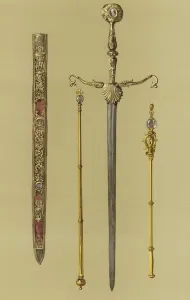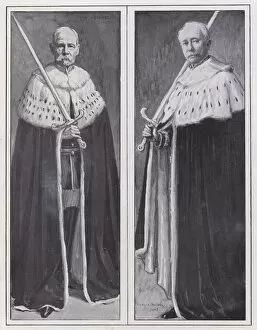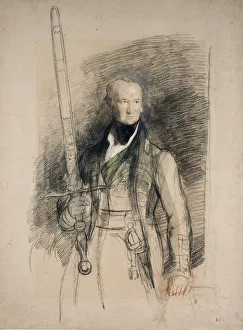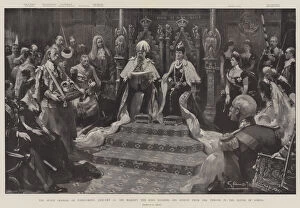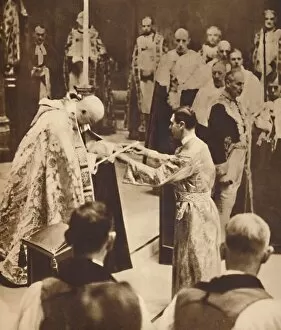Sword Of State Collection
"The Sword of State: A Symbol of Power and Prestige" The Sword of State has long been a symbol of authority, wielded by notable figures throughout history
All Professionally Made to Order for Quick Shipping
"The Sword of State: A Symbol of Power and Prestige" The Sword of State has long been a symbol of authority, wielded by notable figures throughout history. One such figure was Arthur Wellesley, the 1st Duke of Wellington, who carried this majestic weapon during his reign from 1814 to 1815. Painted by Thomas Lawrence, this portrait captures the grandeur and significance bestowed upon those entrusted with the sword. In Scotland, the Regalia showcases various ceremonial objects that represent their rich heritage. Among them is The Sword of State and Scabbard, accompanied by The Sceptre and Lord High Treasurers Mace. These chromolithographs depict the splendor associated with Scottish royalty. Not limited to Scotland alone, other regions also possess their own versions of this prestigious artifact. The Lord Mayor's Sword of State and Pearl Sword in 1916 exemplify how even local authorities can embrace tradition while wielding power. Throughout British history, significant events have seen leaders adorned with swords as they assume their roles. From King Edward VII and Queen Alexandra passing through the Royal Gallery during the State Opening of Parliament in 1902 to Field Marshals Lord Roberts and Lord Wolseley at King Edward VII's coronation - these lithographs immortalize moments where power meets regality. Even beyond official ceremonies or portraits, individuals like The Earl of Morton proudly displayed their privilege when carrying the Sword of State in everyday life as depicted in a black & red chalk drawing from 1824. The symbolism behind this magnificent weapon continues into modern times. In May 1937 photographs capture its elegance on display while being honored for its historical significance. Whether housed within Edinburgh Castle or showcased alongside Liverpool's swords and wooden staves in 1910 - each representation highlights how societies cherish these symbols that embody strength and authority. The Sword of State remains an enduring emblem throughout centuries; it represents not only power but also serves as a reminder of the rich history and traditions that shape our world.


